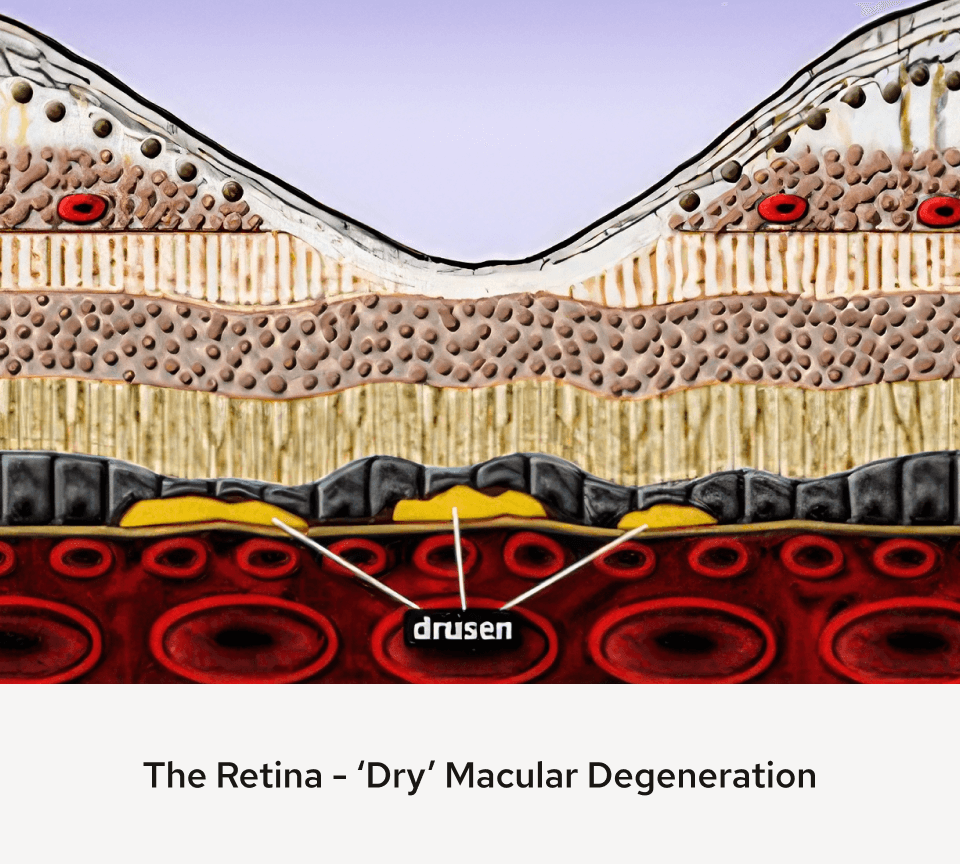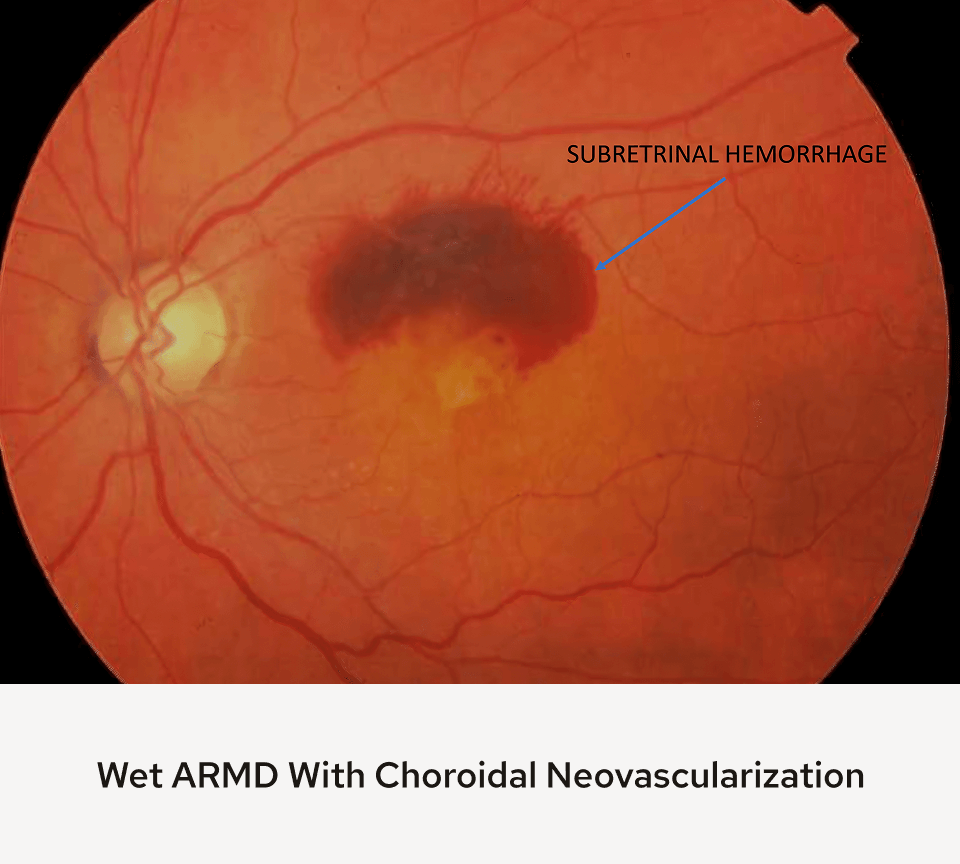Age-Related Macular Degeneration (AMD)
AMD is the leading cause of legal blindness in the US, affecting around 10 million people. Early symptoms include a reduction in reading speed, inability to read fine print, and skipping letters or lines when reading. Later symptoms can include distortion of straight lines or dark or missing areas in the central vision.

The macula is the central part of the retina and allows us to read fine print clearly and see colors vividly. It is this area of the retina that deteriorates in AMD. There are 2 forms of AMD. Everyone who has macular degeneration starts out with the dry type and 10-20% progress to the wet type over the course of a lifetime. Macular degeneration in its most severe forms almost never causes total blindness but can lead to loss of central vision. It is a disease that, left untreated, leaves older persons unable to read and drive. However, nearly all patients will still have enough vision to care for themselves.
Dry Macular Degeneration

- Vitamin C (500 mg)
- Vitamin E (400 IU)
- Lutein (10 mg)
- Zeaxanthin (2 mg)
- Zinc (80 mg)
- Copper (2 mg)
Additional Treatment Information
Wet Macular Degeneration

Schedule a Consultation for Age-Related Macular Degeneration (AMD)
The retina specialists of AVRUC provide expert care for Age-Related Macular Degeneration (AMD). With convenient retina center locations in Carmel, Bloomington, Muncie, and Avon, we welcome patients from the greater Indianapolis area, Evansville, Lafayette, Terre Haute, and beyond.

